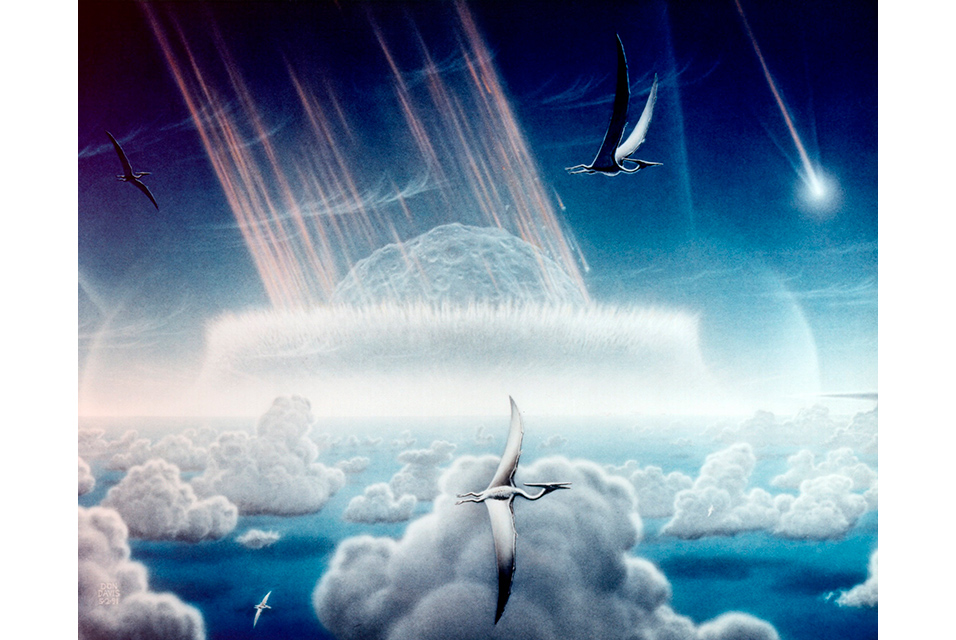LAFAYETTE, LA.- A pair of geophysicists from the
University of Louisiana at Lafayette working with two independent researchers has found what they believe might be evidence of a massive tsunami created by the Chicxulub asteroid impact. In their paper published in the journal Earth and Planetary Science Letters, the group describes their study of seismic data for a site in Louisiana and what they found.
Most scientists agree that approximately 66 million years ago, a large asteroid struck the Earth near what is now the Yucatan peninsula. It is also believed that the impact was so violent that it covered the globe with dust for several years, leading to the demise of the dinosaurs. Some in the field have suggested that the collision also resulted in the creation of a massive tsunami. In this new effort, the researchers reasoned that this tsunami would have made its way across what is now the Gulf of Mexico to the shores of North America. They suggest such a massive collision would have created a wave up to a mile high as it made its way onshore. If so, they further reasoned, there should be evidence of unique geographical formations—the kind that are known to be created by modern tsunamis.
To search for evidence of possible formations, the researchers studied the terrain at a place where the tsunami would have struck and then chose what they believed to be a good place to look more closely: inland Louisiana. To find the evidence they were looking for, the team obtained seismic data from a petroleum firm that allowed them to look at soil at depths up to 1,500 meters below the surface. They found evidence of what they describe as megaripples—huge fossilized ripples that would have been created by a massive influx of water, which then receded. The researchers then studied the ripples to learn more about the direction of the flow of water that had created them, and found they pointed straight to the Chicxulub asteroid impact site. The researchers suggest their find adds yet another piece to the emerging picture of the Chicxulub asteroid impact event.









